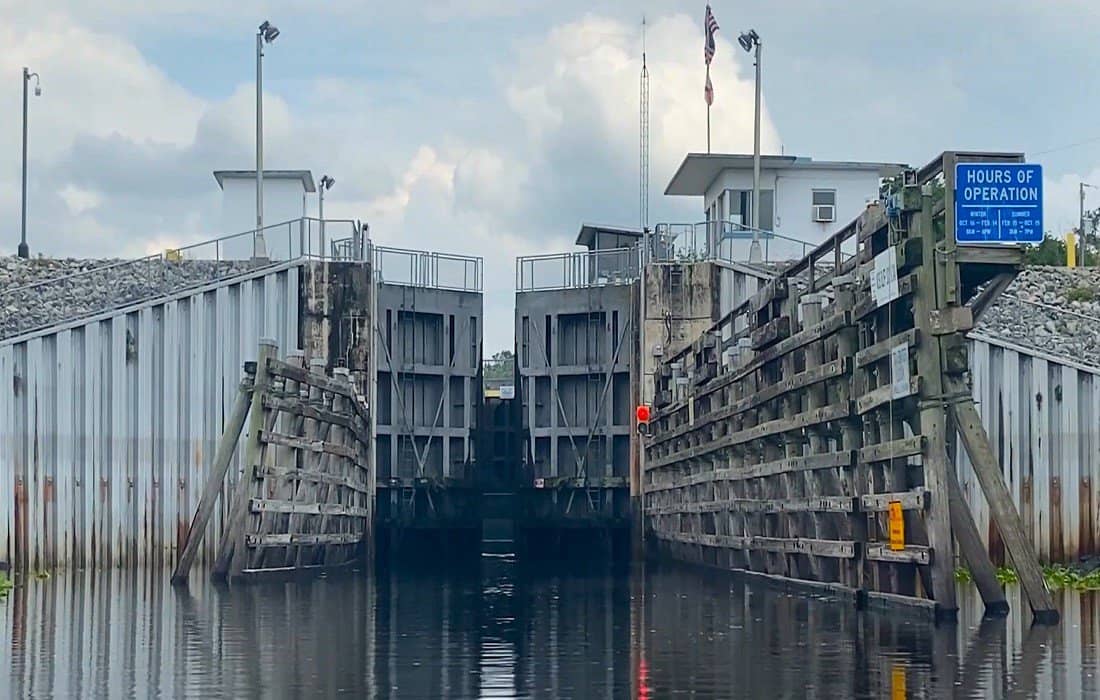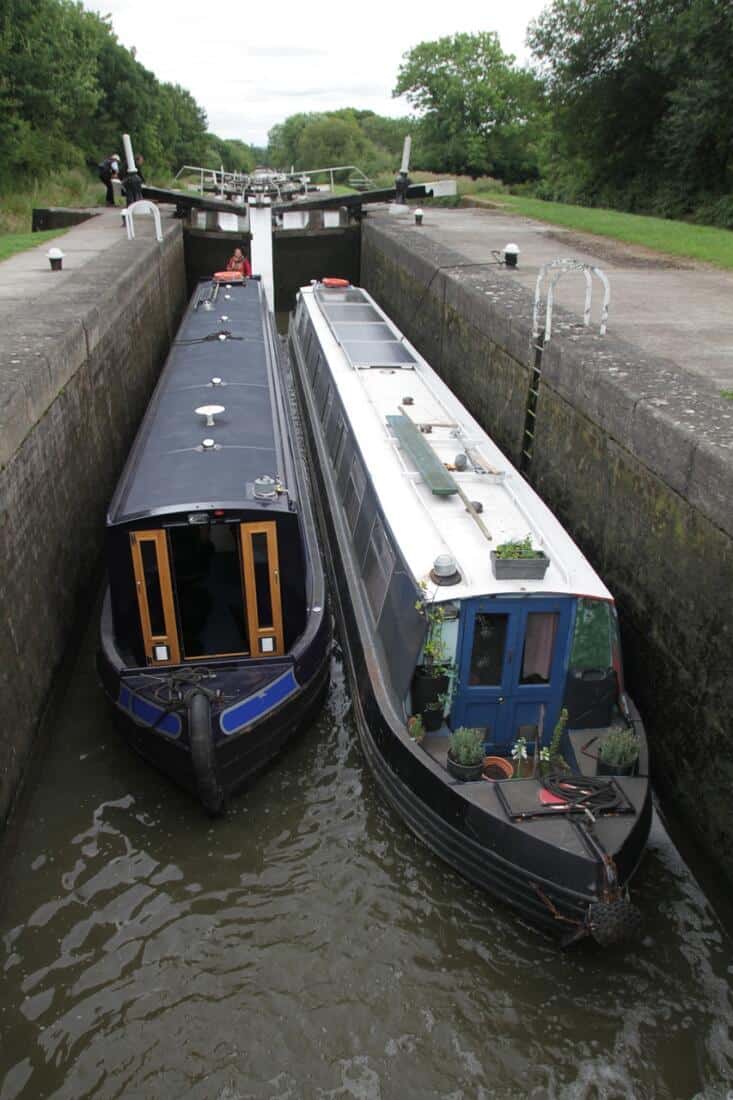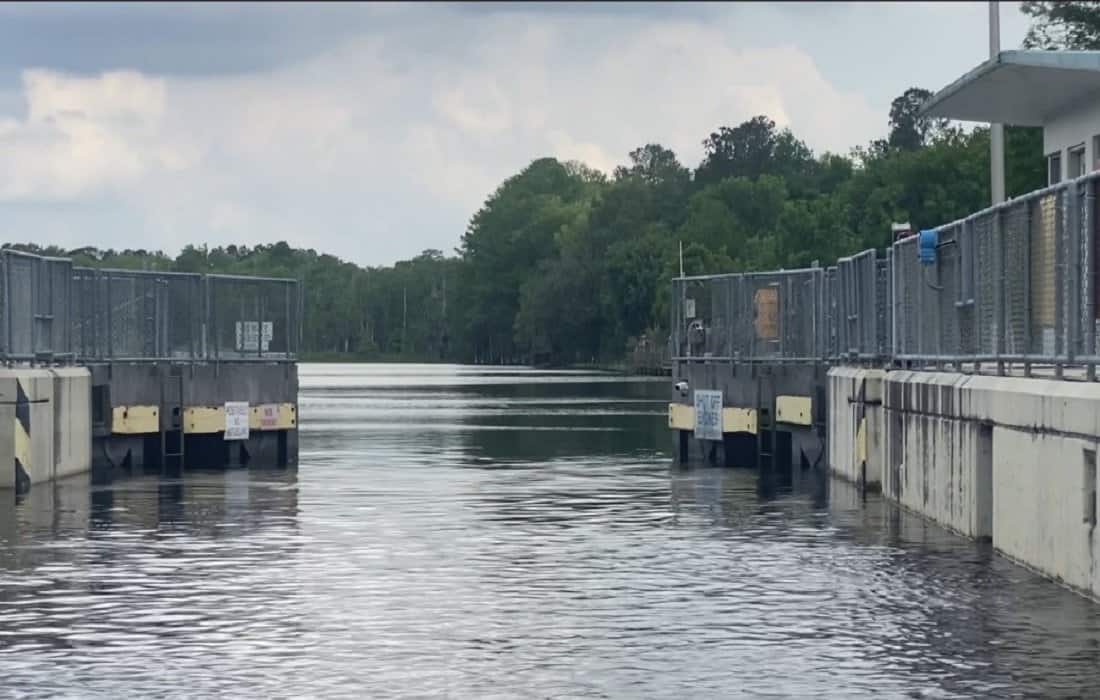Boat Locks in Florida: A Guide to Navigating Florida’s Waterways
Florida is known for its beautiful beaches, warm weather, and abundant waterways. With over 1,350 miles of coastline and more than 30,000 lakes and rivers, it’s no surprise that boating is a popular pastime in the state. However, navigating Florida’s waterways can be challenging, especially regarding the boat locks in Florida.

This post may contain affiliate links. Please read our disclosure and privacy policy for more information.
Boat locks are essential instruments that allow boats to move between bodies of water with different water levels. In Florida, numerous boat locks are maintained by the state or federal government. These locks are critical in ensuring safe and efficient navigation through the state’s waterways. A comprehensive list of all boat locks in Florida can be helpful for boaters who want to plan their routes and ensure a smooth journey.
Understanding Boat Locks
Boat locks are an essential part of navigating Florida’s waterways. They regulate water levels and allow boats to safely pass through areas with varying depths. Understanding how boat locks work is crucial for boaters to avoid accidents and safely navigate through the locks.
How Do Boat Locks Work?
Boat locks are designed to raise or lower water levels to allow boats to pass through. A typical boat lock consists of two gates at either end of a lock chamber. The gates are opened and closed by valves that control the water flow. When a boat enters the lock chamber, the gates are closed, and the valves are opened to allow water to flow in or out of the chamber, raising or lowering the water level.
Types Of Boat Locks
There are two types of boat locks: canal locks and river locks. Canal locks are typically used in man-artificials and must raise or lower boats between different water levels. On the other hand, river locks are used in natural rivers and are designed to bypass rapids or other obstructions in the river.
Here is a typical canal lock, very common in England:

History of Boat Locks in Florida
Florida’s waterways have been used for transportation and commerce for centuries. As early as the 1800s, boats and people were transported across the state’s vast rivers, canals, and lakes. However, the state’s waterways were often plagued by flooding, droughts, and unpredictable tides, making navigation difficult and dangerous.
To address these challenges, Florida began constructing boatlocks in the early 1900s. Boat locks are man-artificial structures that allow boats to navigate through waterways that experience changes in water levels. These locks raise or lower vessels from one water level to another, allowing them to safely navigate through canals and other waterways.

The first boat lock in Florida was built in 1912 on the Caloosahatchee River in Fort Myers. This lock was created to help transport goods and people from the Gulf of Mexico to Lake Okeechobee and beyond. Over the years, more locks were built across the state, including the St. Lucie Lock and Dam, the Ortona Lock and Dam, and the Moore Haven Lock and Dam.
Today, there are over 25 boat locks in Florida, each serving a unique purpose and helping to facilitate commerce, transportation, and recreation across the state’s waterways. The U.S. Army Corps of Engineers maintains these locks, essential to Florida’s infrastructure.
Notable Boat Locks in Florida
Florida has a vast network of waterways for transportation, recreation, and commerce. To facilitate the movement of boats and ships through these waterways, the state has built several locks and dams. These structures help to raise and lower boats between different water levels, allowing them to navigate through areas that would otherwise be impassable. Here are some of the most notable boat locks in Florida:
St. Lucie Lock and Dam
Located on the St. Lucie River in Martin County, the St. Lucie Lock and Dam is one of the most giant locks in Florida. It was built in the 1920s to control the water levels in the river and prevent saltwater intrusion into the freshwater ecosystem. Today, it is used primarily for recreational boating and fishing. The U.S. Army Corps of Engineers operates the lock open to the public year-round.
Moss Bluff Boat Lock In Florida
Moss Bluff lock is a large boat lock. One hundred thirty-nine feet long and 30 feet wide. It doesn’t appear much when approaching from the south, but appearances can be deceiving. We arrived to find the gates closed, but a quick tug on the rope sounded an alert siren. You will drop 24′ in less than 20 minutes once the 44″ north valves open and the gate closes. Concrete walls grow taller around you. Then, you become aware of the steel gates behind you holding back millions of gallons of water. You now have a better idea of how big this lock is. There is no doubt that it will leave an impression. When the north gates open, you are off down the next section of the Ocklawaha River.
Video Navigating The Moss Bluff Boat Lock In Florida
Port Mayaca Lock and Dam
The Port Mayaca Lock and Dam is located on the eastern shore of Lake Okeechobee in Martin County. It was built in the 1930s as part of the Herbert Hoover Dike project to prevent flooding around the lake. The lock and dam help control the lake’s water levels for boats to pass between the lake and the St. Lucie Canal. The U.S. Army Corps of Engineers operates the lock and is open to the public year-round.
Moore Haven Lock and Dam
The Moore Haven Lock and Dam is located on the Caloosahatchee River in Glades County. It was built in the 1930s as part of the Cross-Florida Barge Canal project, which aimed to connect the Gulf of Mexico with the Atlantic Ocean. The project was never completed, but the lock and dam remain used today for recreational boating and fishing. The U.S. Army Corps of Engineers operates the safety and is open to the public year-round.
Ortona Lock and Dam
The Ortona Lock and Dam is located on the Caloosahatchee River in Glades County—a part of the 1930s Cross-Florida Barge Canal project. Like the Moore Haven Lock and Dam, the project was never completed. However, the lock and dam remain used today for recreational boating and fishing. The U.S. Army Corps of Engineers operates the safety and is open to the public year-round.
WP Franklin Lock and Dam
The WP Franklin Lock and Dam is located on the Caloosahatchee River in Lee County. A part of the 1960s Central and Southern Florida Flood Control Project aimed to prevent flooding and improve water management in the region. The lock and dam help control the river’s water levels and allow boats to pass between the river and the Okeechobee Waterway. The U.S. Army Corps of Engineers operates the lock and is open to the public year-round.
Operational Aspects of Florida’s Boat Locks
Florida’s boat locks are an essential part of the state’s waterway infrastructure, allowing boats to navigate through different bodies of water. Here are some key operational aspects of Florida’s boat locks:
Lock Operation
Boat locks in Florida are operated manually by lock operators. The lock operators are responsible for opening and closing the lock gates and handling the water level inside the lock chamber. Boaters must wait for the lock operator to open the lock gates before they can enter or exit the lock chamber.
Lock Scheduling
Boat locks in Florida generally operate on a schedule, depending on the lock location and time of year. Boaters should plan their trips accordingly and check the lock schedules to avoid delays.
Lock Fees
Most boat locks in Florida are free to use, but some may charge a fee. Boaters should check in advance to see if a lock fee applies and what the fee amount is.
Lock Safety
Boaters should always follow safety guidelines when using boat locks in Florida. This includes wearing life jackets, following the lock operator’s instructions, and being aware of other boats in the lock chamber. Boaters should also be mindful of the potential for strong currents and turbulence when entering or exiting the lock chamber.

Overall, Florida’s boat locks are an essential part of the state’s waterway infrastructure, and boaters should be aware of the operational aspects of these locks to ensure a safe and efficient trip.
Safety Tips For Using Boat Locks In Florida:
Boaters should follow these safety tips when using boat locks:
- Always follow the lock operator’s instructions.
- Approach the lockwave carefully.
- Secure all loose items on the boat before entering the lock.
- Use fenders to protect the ship from damage.
- Keep a safe distance from other boats and ships in the lock chamber.
- Never enter or exit a lock chamber while the water level changes.
- Always wear a life jacket.
By understanding how boat locks work and following these safety tips, boaters can safely navigate Florida’s waterways and enjoy their boating experience.
Environmental Impact of Boat Locks
Boat locks play a crucial role in maintaining the water level of canals and waterways in Florida. However, they also have an impact on the environment. Here are a few points to consider:
- Disruption of Natural Flow: Boat locks can disrupt the natural flow of water in a waterway. This can impact the aquatic ecosystem, including the plants and animals that live in the water.
- Alteration of Water Quality: The operation of boat locks can cause changes in the water quality of the canal or waterway. This can be due to releasing pollutants from boats that pass through the waves, such as oil and gas.
- Habitat Fragmentation: Boat locks can fragment the habitat of aquatic species, making it difficult for them to move from one area to another. This can lead to decreased biodiversity and the loss of important species in the ecosystem.
- Noise Pollution: The operation of boat locks can also cause noise pollution, disturbing the natural behavior of aquatic species.
Despite these potential impacts, boat locks are necessary for maintaining the water level of canals and waterways in Florida. It is essential to carefully manage the operation of boat locks to minimize their impact on the environment.

Future of Boat Locks in Florida
As the state of Florida continues to experience growth in population and tourism, the demand for boat locks is expected to increase. The future of boat locks in Florida looks promising as the state invests in improving and expanding its waterway infrastructure.
One of the major projects underway is the Central Everglades Planning Project, which aims to restore the natural flow of water through the Everglades and improve water quality. As part of this project, the state plans to construct a new boat lock at the S-333 structure, providing access to the L-29 canal and the western part of Everglades National Park.
In addition to this project, the Florida Department of Transportation has identified several other areas where boat locks are needed to accommodate increased waterway traffic. These include the St. Lucie Lock and Dam, the Port Mayaca Lock and Dam, and the W.P. Franklin Lock and Dam.
To ensure the safety and efficiency of boat locks, the state is also investing in modernizing and upgrading existing lock structures. This includes replacing outdated equipment, improving navigation aids, and enhancing communication systems between lock operators and boaters.
Overall, the future of boat locks in Florida looks bright as the state continues to prioritize the development of its waterway infrastructure. With new projects underway and improvements to existing structures, boaters can look forward to safe and efficient passage through Florida’s waterways.
Closing Thoughts
If you boat in Florida and you’ve never experienced navigating through a boat lock, it’s a must. While it is a slow process to cross a lock it’s hardly exhilarating. It is a unique experience!
Looking For More? Start Here:
- Busch Gardens – Florida’s Wild Theme Park
- Carrabelle, Florida – Explore This Uknown Beach Paradise
- Downtown Orlando – The Complete Guide
- Florida’s Most Popular Sporting Events
- Hernando Beach – The Complete Guide To The Gulf Of Mexico
- Key West Scooter Rentals – Where To Rent Them
- Marathon Florida – The Best Things To See and Do
- Naples, Florida – The Best Things To Do
- New Smyrna Beach, Florida – The Best Things to Do
- Romantic Beach Dinner Ideas
We participate in the Amazon Services LLC Associates Program, an affiliate advertising program designed to provide a means for us to earn fees by linking to Amazon.com and affiliated sites.
Brit On The Move™ Travel Resources
Ready to book your next trip? Use these resources that work:
Was the flight canceled or delayed? Find out if you are eligible for compensation with AirHelp.
- Book your Hotel: Find the best prices; use Booking.com
- Find Apartment Rentals: You will find the best prices on apartment rentals with Booking.com’s Apartment Finder.
- Travel Insurance: Don’t leave home without it. View our suggestions to help you decide which travel insurance is for you: Travel Insurance Guide.
- Want to earn tons of points and make your next trip accessible? Check out our recommendations for Travel Credit Cards.
- Want To Take A Volunteer Vacation or a Working Holiday? Check out the complete guide to how here!
- Want to Shop For Travel Accessories? Check out our Travel Shop.
Need more help planning your trip? Visit our Resources Page, which highlights the great companies we use for traveling.